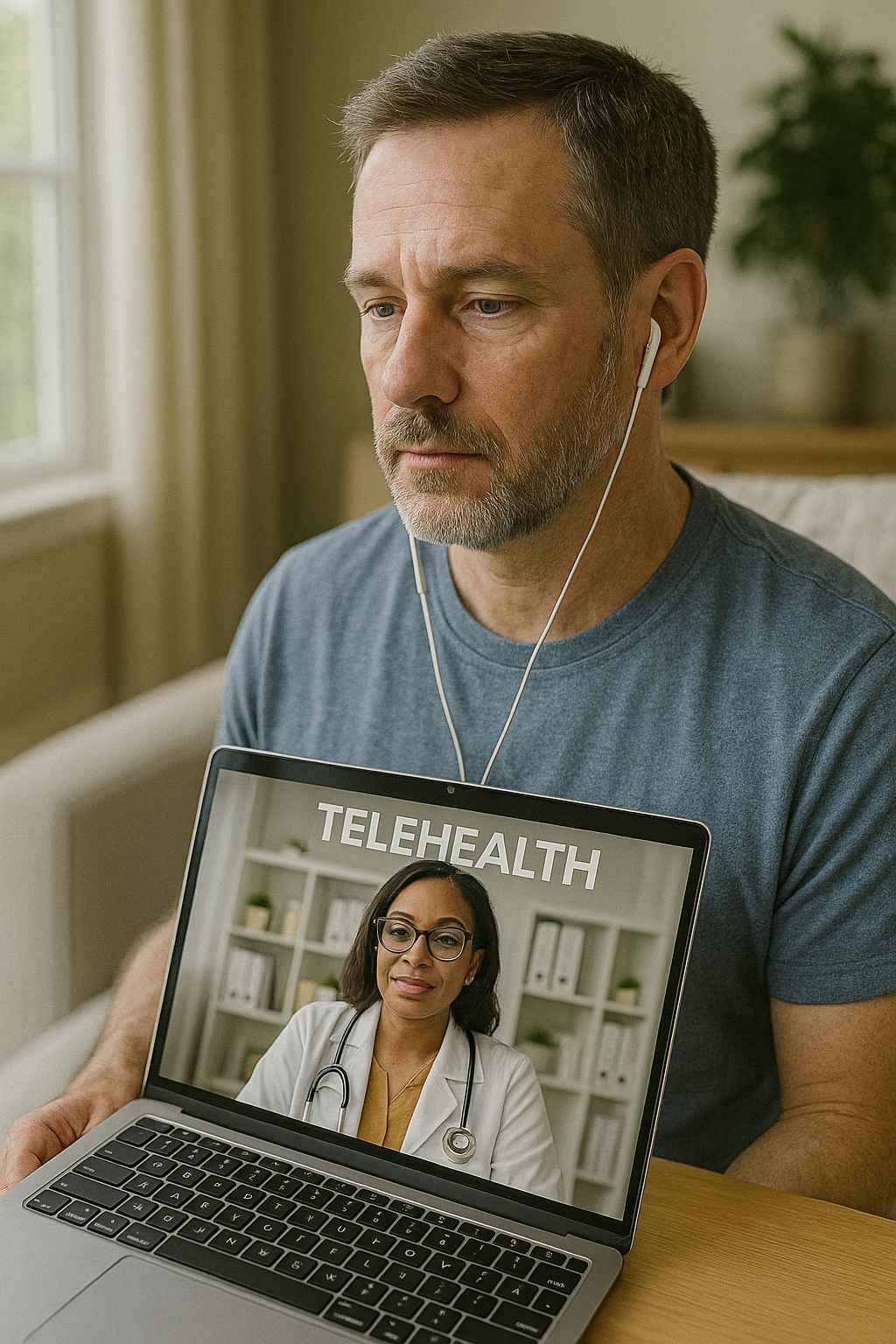Table of Contents
- Introduction
- Why Telehealth Matters for HIV Care
- Benefits of Telehealth in HIV Treatment
- Barriers and Limitations to Consider
- The Future of Telehealth and HIV Care
- Conclusion
- FAQs
Why Telehealth Matters for HIV Care
Access to HIV treatment has always been shaped by geography, stigma, and healthcare availability. For many people, especially those living in rural or underserved areas, visiting an HIV clinic regularly can be difficult. Telehealth HIV treatment has emerged as a powerful solution to bridge these gaps. Through secure video consultations, online pharmacies, and remote lab monitoring, patients can now receive consistent care without the need for frequent in-person visits.
This shift became especially crucial during the COVID-19 pandemic, when telemedicine rapidly expanded and proved its potential to support vulnerable populations, including people living with HIV.
Benefits of Telehealth in HIV Treatment
Telehealth offers several advantages for both patients and providers. One of the most significant is convenience. Instead of taking time off work or traveling long distances, patients can attend appointments from home. This reduces missed visits and helps maintain medication adherence, which is essential for viral suppression.
Another benefit is privacy. Some individuals hesitate to seek HIV care due to stigma. Telehealth allows them to access treatment discreetly, which can reduce stress and increase engagement in care.
Additionally, telehealth platforms often include tools for medication reminders, educational resources, and mental health support. These features can help patients manage not just HIV but also co-occurring conditions such as depression or anxiety.
A growing body of research shows telehealth HIV treatment improves retention in care and adherence to antiretroviral therapy. The result is better health outcomes and fewer new infections. Source
Barriers and Limitations to Consider
Despite its benefits, telehealth isn’t perfect. One challenge is technology access. Not all patients have smartphones, stable internet, or private spaces for virtual appointments. This can limit participation in remote care, especially in low-income or rural communities.
Another concern is the digital divide across age groups. While younger patients may embrace telehealth, older adults living with HIV might struggle with digital tools. Providers must ensure telehealth services are accessible and user-friendly for all.
Insurance coverage is another barrier. Although many health plans now cover telehealth, reimbursement policies can vary. Ongoing advocacy is needed to ensure long-term support and funding for these services.
The Future of Telehealth and HIV Care
As technology continues to evolve, telehealth is expected to play an even greater role in HIV treatment. Artificial intelligence (AI) may soon help identify patients at risk of dropping out of care, while digital tools could monitor adherence in real time.
In addition, hybrid care models are emerging. These combine telehealth with in-person visits, giving patients flexibility while ensuring access to essential lab work and physical exams.
Programs supported by federal initiatives like Ending the HIV Epidemic are already exploring how telehealth can help meet the ambitious goal of reducing new HIV infections by 90% by 2030. By integrating technology into standard care, providers can reach more patients and ensure treatment equity across diverse populations.
Conclusion
Telehealth HIV treatment is not just a temporary solution—it is transforming how care is delivered. By reducing barriers, increasing privacy, and improving adherence, telehealth is helping people living with HIV lead healthier lives. To maximize its impact, policymakers, providers, and communities must work together to expand access and ensure equity.
If you are considering telehealth for HIV care, talk to your provider or visit Healthcare.pro for guidance on finding reliable and accessible services.
FAQs
What is telehealth HIV treatment?
It refers to using digital tools like video calls, mobile apps, and online pharmacies to manage HIV care remotely.
Does telehealth improve HIV treatment outcomes?
Yes. Studies show that telehealth improves medication adherence, reduces missed visits, and enhances patient satisfaction.
Is telehealth HIV care private and secure?
Most platforms use encrypted systems to ensure patient privacy. Always confirm that your provider uses HIPAA-compliant technology.
Can all HIV services be delivered through telehealth?
Not all. Lab tests, vaccinations, and some exams still require in-person visits, but telehealth can reduce the frequency of clinic trips.
Who can benefit most from telehealth HIV treatment?
People in rural areas, those facing stigma, or individuals with busy schedules may find telehealth especially helpful.
This content is not medical advice. For any health issues, always consult a healthcare professional. In an emergency, call 911 or your local emergency services.




